Publishers strive to increase eCPM rates, and header bidding is a powerful tool for achieving this goal. However, header bidding comes with its complexities, such as partnering with SSPs, integrating Google AdX, and analyzing performance metrics like page load time, user behavior, and viewability.
In addition, optimizing header bidding setup requires regular attention and tweaking, which can be challenging even for seasoned publishers. A range of header bidding Chrome extensions has been developed to ease this process. These tools can provide valuable insights into your setup, bidder performance, and ways to optimize your strategies.
This article will provide a comprehensive guide to these extensions, diving into how they can help you make informed decisions, improve your header bidding setup, and ultimately increase your eCPM rates.
We’ll cover key metrics to consider when optimizing header bidding, explore the top Chrome extensions available, and show how they can enhance your revenue optimization strategies. Let’s delve in!
Table of Contents
Key Metrics and Tools for Optimizing Header Bidding Performance
Optimizing your header bidding performance involves understanding and analyzing key metrics directly impacting your eCPM rates. Let’s briefly explore these:
- Latency of Bidder Partners: The speed of bidder responses can significantly impact performance. Tools like Headerbid Expert and MyAdPrice can track this metric. This helps publishers determine which demand partners are the fastest and most reliable and which ones might be causing delays.
- Optimizing Winning Bid Prices: Examining the winning bid price helps determine your setup’s effectiveness. Headerbid Expert and BidFilter provide insights here. By identifying which demand partners provide the highest bids, publishers can adjust their setup to prioritize those partners and increase their revenue potential.
- Ad Slot Specifications: The size and placement of ad slots impact header bidding performance. BidFilter provides data on ad slots and bid prices received for them. This helps them figure out which ones are most effective so that they can change their website. Publishers might change the size or placement of their ad slots to make the effective ones more prominent. They can also try out different ad formats and placements to see if they can improve CPMs.
Top Five Header Bidding Extensions to Optimize Your Setup
1. Headerbid Expert

Headerbid Expert, developed and continually updated by the experts at Prebid.org, is a highly regarded tool among publishers due to its robust optimization capabilities. It offers valuable insights that can enhance your header bidding setup. Let’s delve into its key features:
Comprehensive bidders’ analysis: With Headerbid Expert, you can effortlessly access a comprehensive analysis of your site’s bidders participating in header auctions.
This information allows you to understand the bidders involved in the bidding process and make informed decisions to maximize revenue.
Response time tracking: The extension enables you to track and monitor the response times of each bidder partner. You can gain valuable performance insights by analyzing how long it takes for each partner to respond.
This information helps you identify potential bottlenecks or latency issues and take appropriate actions to optimize your header bidding setup.
Optimization with suggestions: Headerbid Expert goes further by providing valuable recommendations to optimize your header bidding implementation.
It offers suggestions on adjusting timeouts and making changes to improve revenue while minimizing impression loss. These suggestions are based on industry best practices and can help you fine-tune your setup for optimal performance.
2. BidFilter
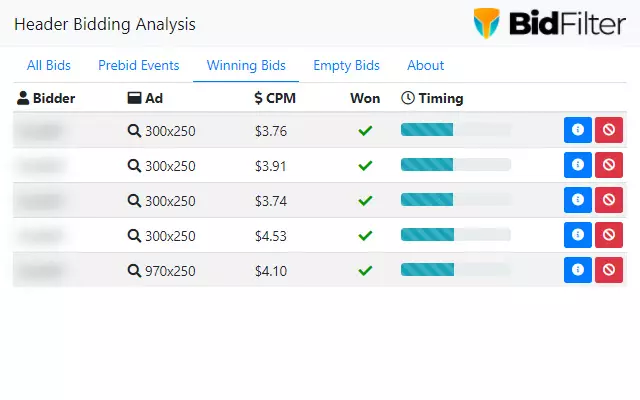
BidFilter offers valuable insights that can greatly benefit publishers and advertisers in optimizing their header bidding setup. Let’s explore how these insights can be used:
Detailed bidder and bid information: By accessing comprehensive data on your bidder partners and their bids for each ad slot, you gain a deep understanding of their performance.
This information allows you to identify the most valuable partners, evaluate the overall health of your network, and make informed decisions about your bidding strategy.
Identify non-participating partners and empty bids: BidFilter helps you pinpoint partners who intentionally didn’t bid or experienced timeouts. This insight is crucial in streamlining your bidding process and improving efficiency by removing non-participating partners.
By eliminating empty bids, you can reduce wasted resources and focus on the most active and valuable contributors to your revenue.
Assess ad size demand and optimize placement: BidFilter enables you to analyze the demand for specific ad sizes per bidder. This information lets you understand which ad sizes are performing well and which are not.
With this knowledge, you can optimize your inventory by activating or deactivating bidders based on their performance with different ad sizes.
Additionally, by evaluating the demand for ad sizes on your page and considering the number of partners returning with bids, you can strategically place your ads for maximum visibility and effectiveness.
3. Google Publisher Console
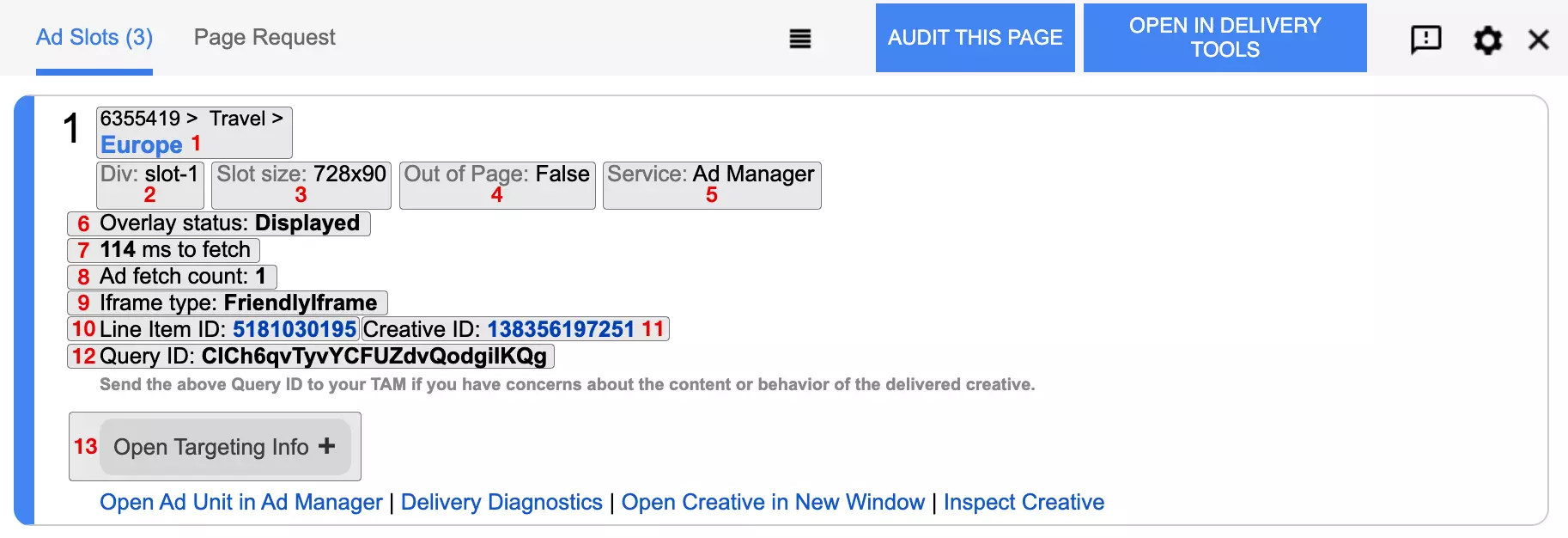
Google Publisher Console is a fantastic feature available to Google Ad Manager users. It’s like having a handy tool that helps you dive deep into ad delivery analysis and troubleshooting. If you ever face any issues with ad rendering or JavaScript tagging errors, this tool is here to save the day. Let’s explore its key features together:
Easy access and setup: Getting started with the console is a breeze. All you need to do is create a bookmark or customize the URL. Once it’s set up, simply click on the bookmark.
The console panel pops up at the bottom of your page. It’s like having a helpful sidekick right by your side, ready to assist you.
Detailed ad unit information: The console provides all the details about each ad unit. You can easily check its name, delivered ad sizes, fetch and render times, and even the number of ads fetched.
You can examine every aspect of your ad units, ensuring they work smoothly and reach the right audience.
Performance analysis: Now, let’s talk about performance. The console allows you to analyze important factors like page load speed, ad loading speed, and even the performance of your demand partners.
It’s like having a performance coach who gives you insights into how well your ad units are doing and where you can improve their efficiency.
Debugging capabilities: We all know that sometimes things can go a little haywire. But fear not! The console comes to the rescue with its powerful debugging capabilities.
It helps you pinpoint any issues with ad rendering or JavaScript tagging errors, making troubleshooting and resolving technical problems easier than ever.
Essential metrics review: Google Publisher Console is your go-to dashboard for quickly reviewing essential metrics like ad impressions, CTR, viewability, fill rate, and revenue.
With the console, you can spot any hiccups, take immediate action, and optimize your ad operations to deliver exceptional experiences. It’s your control center for staying informed, making necessary optimizations, and maximizing your ad revenue potential.
4. MyAdPrice
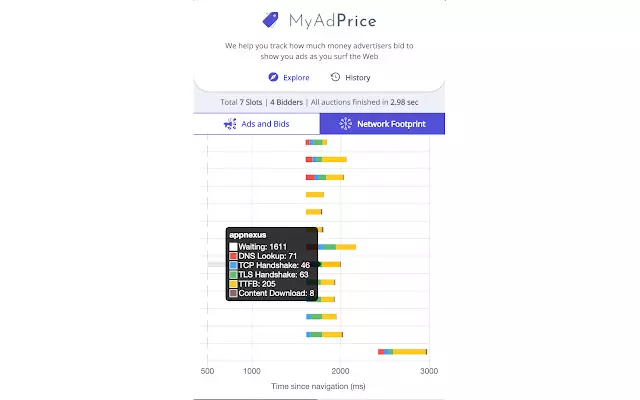
MyAdPrice, a powerful extension offers publishers a range of valuable insights and features to optimize their header bidding setup and maximize ad revenue. Let’s delve into its key features:
Bidders and ad slot segmentation: MyAdPrice provides a comprehensive list of bidders who participated in the auctions on your page, segmented by ad slots.
This segmentation allows you to gain a clear understanding of the bidders involved in each ad slot, empowering you to evaluate their performance and make informed decisions.
Bid price analysis: You can access detailed information about each bidder’s CPM (bid price). This feature enables you to evaluate the competitiveness of each bidder and assess their contribution to your ad revenue.
Understanding the bid prices allows you to optimize your bidding setup and maximize your overall earnings.
Winning bidder information: The extension lets you identify the winning bidder for each ad slot. By gaining insights into the most successful partners, you can further analyze their performance, optimize your partnerships, and foster long-term relationships with high-performing bidders.
Auction duration metrics: It provides valuable metrics that help you understand the duration of the auctions on your page. This overview of auction efficiency allows you to identify any bottlenecks or delays and take necessary measures to improve the overall speed and efficiency of your auctions.
Bid response time analysis: Analyzing the response time of bidders with their bids is another useful feature offered by the extension. By understanding how long it took bidders to respond, you can optimize your timeout settings to ensure you receive bids promptly.
This analysis helps you improve bid rates and maximize the revenue potential of your header bidding setup. In addition to these powerful insights, MyAdPrice offers additional revenue-related features for your users:
- Website revenue tracking: Visitors can see how much revenue your website generated while browsing your content. This transparency fosters trust and allows users to see the direct impact of their engagement on your revenue.
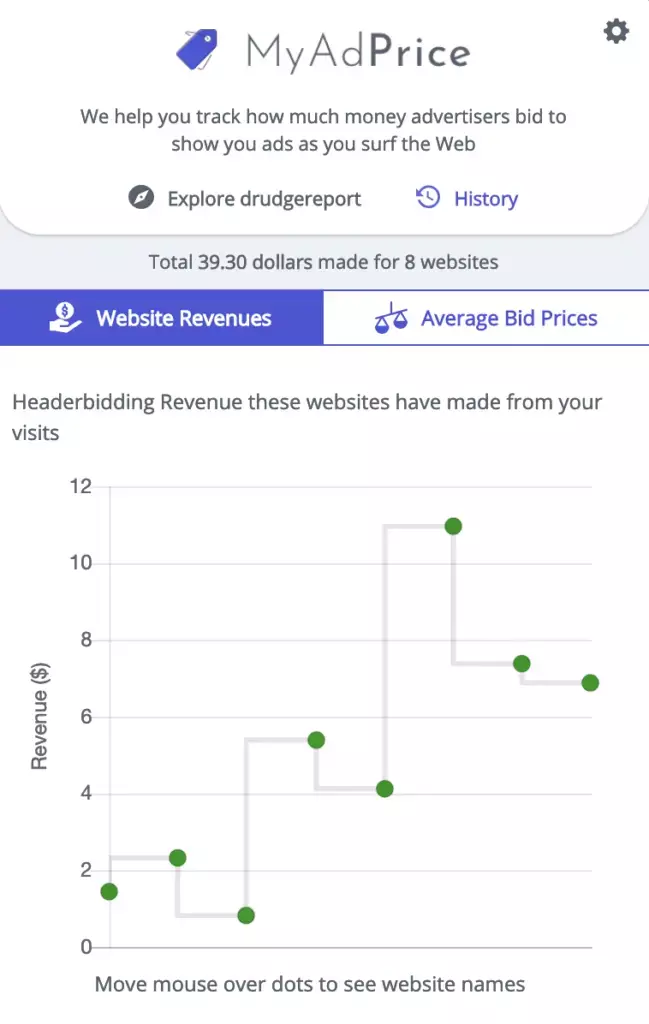
5. Professor Prebid
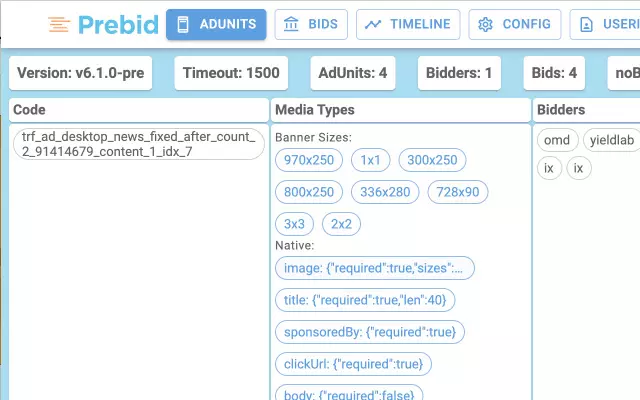
Professor Prebid, developed by Roxot, is a powerful Chrome extension that can help you gain real-time analytics and performance monitoring for your header bidding. It offers a range of features to optimize your header bidding strategy and maximize your ad revenue. Let’s explore its key features:
Comprehensive bidder analytics: With Professor Prebid, you can gain valuable insights into your bidders’ bid rates and win rates. This information lets you assess their performance and make data-driven optimizations to improve your revenue potential.
Optimization tools: You can access a suite of tools specifically designed to maximize your revenue and fine-tune your header bidding setup. These tools provide actionable optimization options to enhance your bidding strategy and increase earnings.
Real-time performance monitoring: Keep a close eye on the performance of your header bidding auctions in real time. This feature enables you to quickly identify and address any issues or discrepancies that may arise, ensuring smooth and efficient bidding operations.
Conclusion: Making the Most of Your Header Bidding Setup with Chrome Extensions
So there you have it, our top picks for the five most popular header bidding extensions. One of the key takeaways from this piece is that these tools help publishers plan ad optimization in a more relevant and timely manner while potentially driving up your ad revenue.
Header bidding can encourage competition, which means the optimal price is reached more quickly than with a waterfall. But it is far from a one-size-fits-all solution. There are many nuances to understand on the publisher side–including how your entire stack works, how revenue will be split between partners, and whether you need to implement any code changes on your site.
Any publisher just now getting into header bidding should not consider all header bidding extensions created equal. So, we recommend setting up all extensions to see what they offer and determine which works best for your website.























